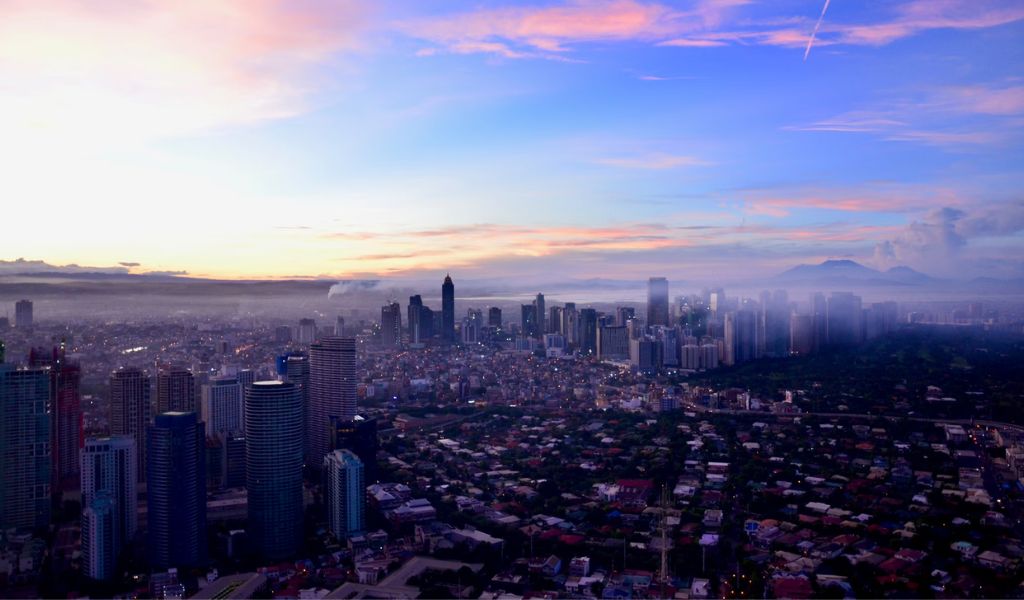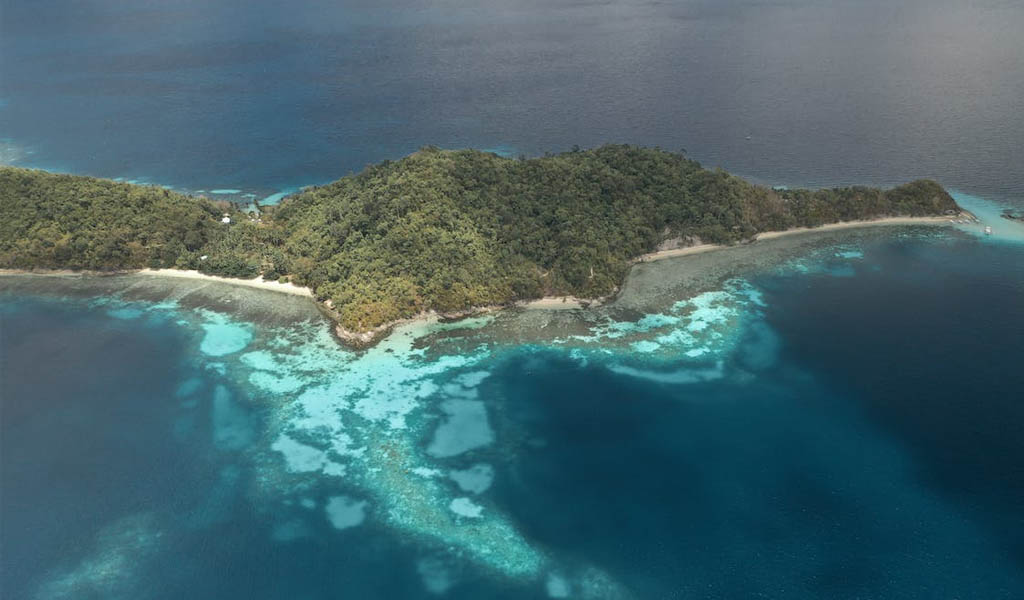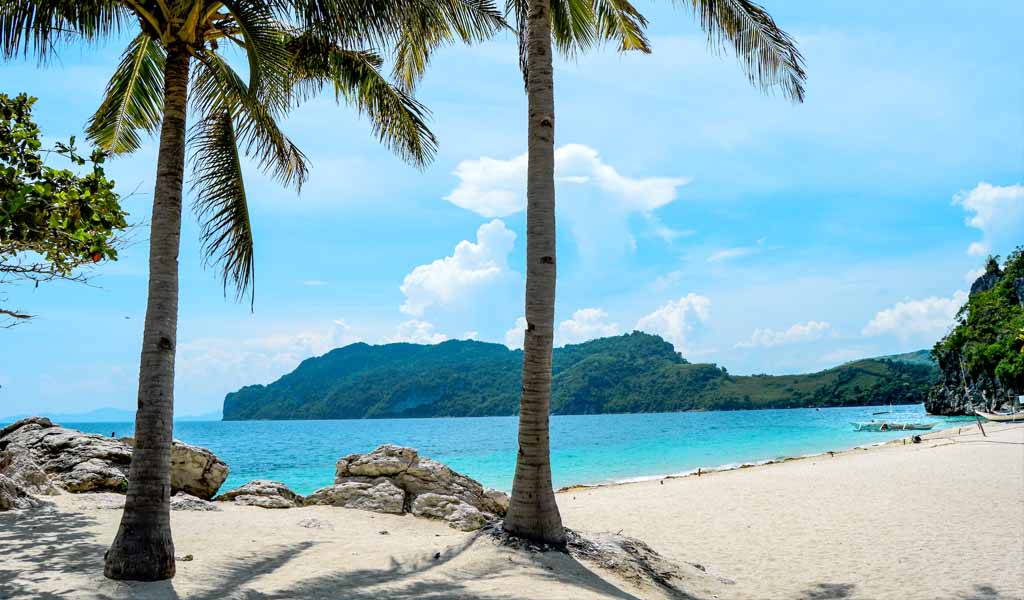Embark on an Adventure: The Ultimate Sightseeing Tours in Manila Awaits!
Are you ready to discover the rich cultural tapestry and vibrant energy of Manila? The capital city of the Philippines is brimming with historical landmarks, stunning architecture, and unique experiences that promise to make your sightseeing tour one for the books. With a blend of Spanish colonial influence and modern Filipino flair, Manila offers a diverse array of attractions to explore. From significant historical sites to bustling markets and serene parks, this listicle dives into the top 10 must-see spots in Manila that will leave you captivated and eager for more. Whether you’re a seasoned traveler or planning your first trip, get your cameras and walking shoes ready – we’re about to embark on an unforgettable Manila adventure!
1. Intramuros: The Walled City Worth the Walk

Intramuros, often referred to as the “Walled City,” is one of the most iconic and historically rich districts in Manila, offering a glimpse into the Philippines’ colonial past. Built during the Spanish occupation in the 16th century, this walled fortress is home to well-preserved structures such as Fort Santiago, Manila Cathedral, and San Agustin Church, which is a UNESCO World Heritage Site. Sightseeing tours of Intramuros allow visitors to walk along its cobblestone streets, explore ancient fortifications, and delve into museums that house artifacts from the Spanish era. The district’s blend of historical architecture and cultural significance makes it a must-visit destination for history buffs and curious travelers alike.
Facts
- Construction of the walls began in 1590 and took over a century to complete.
- Intramuros was the seat of government and political power during the Spanish Colonial Period.
- The walled city suffered extensive damage during the Battle of Manila in 1945 and has since undergone significant restoration efforts to preserve its historical landmarks.
2. Rizal Park: A Tribute to a National Hero

Rizal Park, also known as Luneta Park, is a historic and cultural landmark in the heart of Manila, dedicated to the Philippines’ national hero, Dr. José Rizal. This sprawling park covers 58 hectares and serves as a green oasis amidst the bustling city, making it a popular spot for locals and tourists alike. At its centerpiece stands the Rizal Monument, a symbol of Filipino patriotism and the site where Rizal was executed by Spanish authorities in 1896, sparking the Philippine Revolution. Beyond its historical significance, Rizal Park offers landscaped gardens, fountains, open spaces for leisure, and various attractions such as the National Museum Complex, making it a perfect place for relaxation and reflection.
Facts
- The Rizal Monument in the park holds the remains of Dr. Jose Rizal and serves as a mausoleum.
- Rizal Park is the location for the annual Independence Day celebrations on June 12th.
- The park covers an area of about 58 hectares (140 acres), making it one of the largest urban parks in Asia.
3. National Museum Complex: A Feast for Culture Vultures

The National Museum Complex in Manila is a cultural hub that showcases the rich heritage and history of the Philippines through its vast collection of art, artifacts, and natural history exhibits. Comprising several museums, including the National Museum of Fine Arts, National Museum of Anthropology, and National Museum of Natural History, the complex offers visitors an in-depth look at the country’s artistic, cultural, and scientific legacy.
The Fine Arts Museum houses masterpieces like Juan Luna’s Spoliarium, while the Anthropology Museum features pre-colonial artifacts, such as the famed Manunggul Jar. Meanwhile, the Natural History Museum highlights the country’s diverse flora and fauna, including the skeleton of the rare Lolong, the largest saltwater crocodile ever recorded. Whether you’re an art enthusiast or a history lover, the National Museum Complex offers an enriching experience that brings the Philippines’ heritage to life.
Facts
- The National Museum of Fine Arts houses works of classical Filipino artists including Juan Luna and Felix Resurreccion Hidalgo.
- The National Museum of Natural History was officially opened to the public in May 2018 and features a stunning DNA tree of life structure in its central atrium.
- Admission to the National Museum Complex is free of charge to encourage more visitors to learn about the country’s rich heritage.
4. Binondo: The Oldest Chinatown in the World

Binondo, recognized as the world’s oldest Chinatown, is a bustling district in Manila that represents a vibrant blend of Filipino and Chinese cultures. Established in 1594, Binondo has been a center for commerce, trade, and cultural exchange for centuries. Today, it remains a popular destination for those looking to experience authentic Chinese-Filipino cuisine, shop for traditional goods, and explore historic landmarks.
Visitors can walk along Ongpin Street, lined with shops selling herbal medicines, jewelry, and festive decorations, or savor the flavors of renowned Chinese restaurants. Notable landmarks include Binondo Church, a testament to the deep religious roots of the area, and Escolta, which used to be Manila’s financial district. Binondo’s lively streets, rich history, and unique cultural fusion make it an essential stop for both food lovers and history enthusiasts exploring Manila.
Facts
- Binondo was created by the Spanish Governor Luis Pérez Dasmariñas for the Chinese immigrants who converted to Christianity.
- The Binondo Church, also known as Minor Basilica of San Lorenzo Ruiz, is an important landmark founded by Dominican priests in 1596 to serve the local Chinese community.
- Binondo is famous for its culinary offerings, especially during the Chinese New Year, when the district is adorned with festive decorations and streets are lined with vendors selling traditional Chinese fares.
5. Manila Ocean Park: Underwater Explorations Await

Manila Ocean Park is a premier marine-themed attraction and one of the top family-friendly destinations in the city, offering a variety of aquatic exhibits and interactive experiences. Located along the scenic Manila Bay, the park is home to a wide array of marine life, with its centerpiece being a 25-meter underwater tunnel where visitors can walk through and marvel at the diverse sea creatures swimming overhead.
Beyond its aquarium, Manila Ocean Park features shows such as the Sea Lion Show, a Penguin Exhibit, and a Birds of Prey Kingdom. Guests can also enjoy unique experiences like feeding rays, swimming with sharks, or engaging in a spa session with doctor fish. With its blend of education, entertainment, and conservation efforts, Manila Ocean Park provides an exciting and immersive way to learn about the wonders of the ocean while promoting marine biodiversity.
Facts
- Manila Ocean Park is home to over 14,000 sea creatures from about 277 species, all indigenous to the Philippines and Southeast Asia.
- The Oceanarium’s journey takes visitors through the watery depths of the Philippines’ marine ecosystem, divided into seven sections from shallow to deep water habitats.
- Aside from the Oceanarium, the park also includes a mall, and a marine-themed hotel, and offers various aquatic-themed shows and experiences, such as the Sea Lion Show and the Symphony Evening Show, which combines lights, fountains, and music.
6. The Cultural Center of the Philippines (CCP): A Hub for Art Aficionados

The Cultural Center of the Philippines (CCP) is the premier institution for promoting and preserving Filipino arts and culture, located in the vibrant Pasay City along Roxas Boulevard. Established in 1969, the CCP serves as a national hub for artistic expression, showcasing a wide range of performances, from theater, dance, and music to film, visual arts, and literature. Its iconic Brutalist-style main building houses venues like the Tanghalang Nicanor Abelardo (Main Theater), which has hosted prestigious performances by both local and international artists.
The CCP is not just a performance space but also a symbol of the country’s rich cultural identity, nurturing Filipino talent and fostering appreciation for both traditional and contemporary arts. Whether attending a ballet, a concert by the Philippine Philharmonic Orchestra, or a modern art exhibit, visitors to the CCP are immersed in a dynamic cultural experience that celebrates the diversity and creativity of the Philippines.
Facts
- The CCP Complex spans some 88 hectares and includes numerous performance venues, among them the Tanghalang Pambansa (National Theater), Tanghalang Francisco Balagtas (Folk Arts Theater), and the Tanghalang Aurelio Tolentino (Little Theater).
- The architecture of the main building, designed by National Artist for Architecture Leandro Locsin, is a landmark of Brutalist design in the Philippines, featuring the use of raw concrete and bold, simple lines.
- The CCP also serves as the home of resident companies such as Ballet Philippines, the Philippine Ballet Theatre, the Philippine Philharmonic Orchestra, the Tanghalang Pilipino, and the National Music Competitions for Young Artists Foundation (NAMCYA).
7. Quiapo Church: A Spiritual Journey

Quiapo Church, officially known as the Minor Basilica of the Black Nazarene, is one of the most significant religious sites in the Philippines, located in the heart of Manila. Famous for housing the revered image of the Black Nazarene, a life-sized statue of Jesus Christ believed to grant miracles, the church attracts millions of devotees, particularly during the annual Traslación procession in January.
The church’s Baroque-style architecture adds to its historical charm, making it not only a spiritual center but also a landmark of cultural and historical importance. Outside the church, the bustling Plaza Miranda is a hub of activity, where vendors sell religious items, herbal medicines, and other local goods. Quiapo Church stands as a symbol of Filipino faith and devotion, drawing both pilgrims and tourists to experience its profound religious atmosphere.
Facts
- Quiapo Church is the site of the annual Feast of the Black Nazarene every January 9, attracting millions of devotees in one of the largest religious processions in the country.
- The original structure of Quiapo Church was built by the Franciscans in 1586, but it has gone through numerous reconstructions due to damage from fires, earthquakes, and the Second World War.
- The current baroque-inspired edifice was completed in the 1980s, featuring a distinctive façade with twisted columns and intricate carvings, but the image of the Black Nazarene dates back to the 17th century.
8. Ayala Museum: Where Philippine History Meets Art

Ayala Museum, located in the heart of Makati City, is a leading institution dedicated to preserving and showcasing the rich history, culture, and art of the Philippines. Known for its well-curated exhibits, the museum offers a unique journey through Filipino history with its famous dioramas that depict key moments from pre-colonial times to the modern era.
The museum also features a vast collection of pre-Hispanic gold artifacts, indigenous textiles, and maritime trade materials that highlight the country’s heritage. In addition to historical displays, Ayala Museum hosts contemporary art exhibitions, promoting both local and international artists. The museum’s sleek, modern design and its integration of technology into its exhibits make it an engaging cultural destination for visitors looking to explore the Philippines’ artistic and historical landscape.
Facts
- The museum features six floors of exhibitions, which include the Diorama Experience – 60 handcrafted dioramas that depict pivotal moments in Philippine history, from pre-Hispanic times to the EDSA People Power Revolution.
- The museum also holds a notable collection of pre-Hispanic gold and indigenous textiles, highlighting the craftsmanship and trade of pre-colonial Filipinos.
- To promote modern and contemporary Filipino art, the museum periodically holds temporary exhibitions and public programs that support local artists and their work.
9. Star City: The Thrill Seeker’s Playground

Star City is one of the most popular amusement parks in Metro Manila, offering a wide array of rides and attractions that cater to visitors of all ages. Located in Pasay City, the park is known for its thrilling roller coasters, family-friendly rides, and interactive entertainment, making it a favorite destination for both locals and tourists. Star City features a mix of indoor and outdoor attractions, ensuring fun regardless of the weather, with highlights such as the iconic Star Flyer, a suspended roller coaster, and the Snow World exhibit, where guests can experience sub-zero temperatures and ice sculptures.
Along with its carnival games and live performances, Star City provides a festive atmosphere perfect for family outings, group adventures, and school trips. After undergoing renovations following a fire in 2019, Star City continues to be a go-to spot for amusement and excitement in Manila.
Facts
- Star City opened its doors in the late 1980s and has grown to become one of the leading amusement parks in the Philippines, often integrating themes and characters from Filipino folklore and pop culture.
- The park is known for its variety of rides, including family-friendly attractions, thrilling roller coasters, and a Ferris wheel that offers panoramic views of Manila Bay.
- In October 2019, a fire struck Star City, causing significant damage and necessitating the temporary closure of the park for rehabilitation. However, efforts to rebuild and revive the beloved amusement center are underway.
10. Manila Baywalk: The Perfect Sunset Spot

The Manila Baywalk is a picturesque promenade stretching along Roxas Boulevard, offering stunning views of Manila Bay and its world-famous sunsets. This iconic destination is a favorite spot for locals and tourists alike, providing a peaceful space for strolls, jogging, or simply enjoying the sea breeze. Lined with palm trees and dotted with benches, the Baywalk also features restaurants, cafes, and street vendors, making it a vibrant yet relaxing location for dining and entertainment.
In the evenings, live music performances and various street activities add to the lively atmosphere, making it an ideal place for both relaxation and socializing. The Manila Baywalk is not just a scenic walkway but a cultural and recreational hub that showcases the beauty and spirit of Manila.
Facts
- The Manila Baywalk area was revitalized in the early 2000s to become a clean and safe environment for public recreation, showcasing the natural beauty of the bay and its horizon.
- Various statues and monuments can be found along the Baywalk, including the Rizal Monument, dedicated to the national hero Dr. Jose Rizal, and a selection of modern art installations and sculptures.
- In recent years, Manila Bay has been the subject of major rehabilitation efforts by the government to address pollution and restore its waters, ensuring the Baywalk remains a cherished Manila landmark.
Looking for thrilling and stunning views? Just click here.
Sealing the Deal: Your Sightseeing Tours in Manila Memories to Last a Lifetime!
As our sightseeing tour of Manila draws to a close, it’s clear that this city’s blend of history, culture, and modern excitement leaves visitors enthralled. Each attraction on our list brings a unique flavor to the Manila experience, showcasing the city’s ability to harmoniously marry its past with the present. Whether you’ve marveled at the architecture in Intramuros, indulged in culinary delights in Binondo, or savored the serenity at Manila Baywalk, these memories will linger long after your trip. So, when wanderlust strikes again, remember that Manila’s warm embrace and extraordinary sights are waiting to welcome you back for another adventure. Mabuhay and see you soon in the heart of the Philippines!
FAQs About Sightseeing Tours in Manila
1. How long does a typical sightseeing tour in Manila take?
Sightseeing tours can vary widely in duration, ranging from a half-day (approximately 4 hours) to a full day (around 8 hours), depending on the itinerary and whether you include nearby sites.
2. What is the best time of year to visit Manila for a sightseeing tour?
The best time to visit Manila for good weather is during the dry season, which runs from December to May, with the coolest months being December to February.
3. How do I get around during my sightseeing tour?
You can get around Manila by taxi, jeepney, tricycle, or through various ride-hailing apps. Organized sightseeing tours often provide their own transportation.
4. Are Manila sightseeing tours expensive?
The cost of sightseeing tours in Manila can vary depending on the company, tour length, inclusions, and whether it is a private or group tour. Generally, Manila offers a range of options to fit different budgets.
5. Is it safe to go on a sightseeing tour in Manila?
Manila, like any major city, has areas that are safer than others. Stick to tourist-friendly areas, remain vigilant, and follow safety advice from your tour guide or locals.







